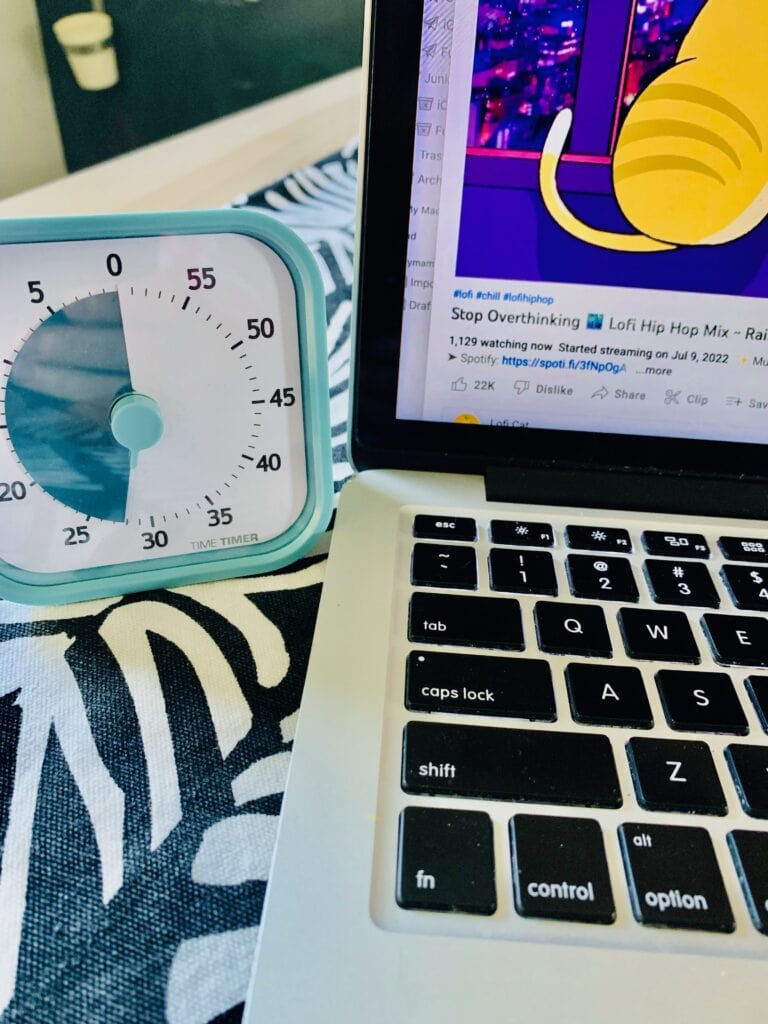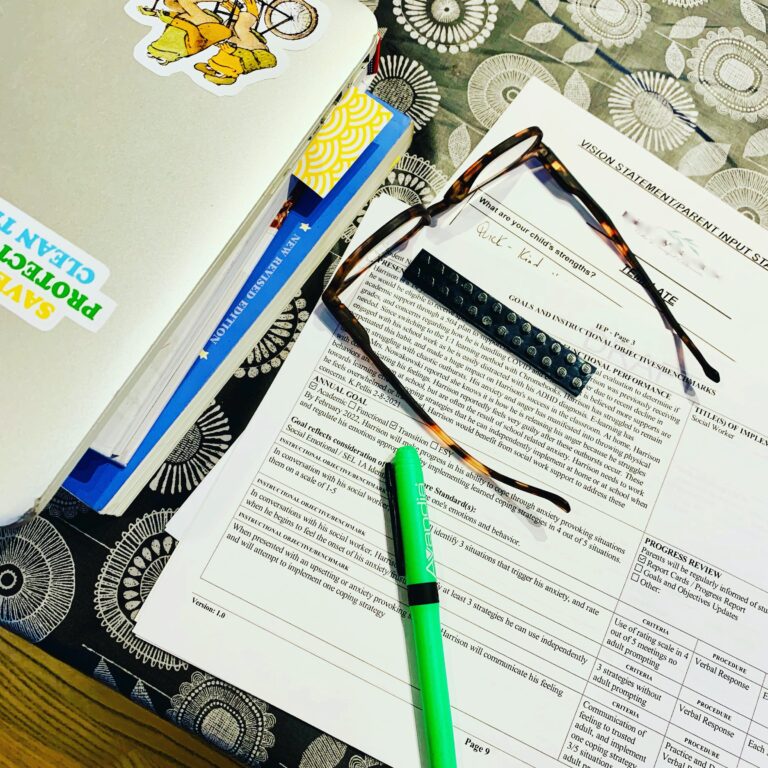accommodations Checklist for ADHD Students

Kids with attention deficit disorders often struggle to complete assignments. have trouble listening, seem to always be talking when they aren’t supposed to and can have tremendous difficulty focusing on the academic task at hand.
There are many, many things that can done to help your child. Getting a 504 with individualized accommodations is a great start. Having this ADHD accommodations checklist at hand can be a life saver.
We’re here to lay out all the steps for you and give you extra tips and a long adhd accommodations checklist, plus advice on getting a 504 plan in place for your child or beefing up the one they already have.
What Accommodations should We Include?
Accommodations in the school setting will give your child an equal opportunity to show what he or she knows. While reasonable accommodations can be decided upon during your initial 504 meeting, it’s great to come to the meeting with a list of accommodations you think will help your child the most. School staff members, general education and special education teachers are most often willing to hear suggestions.
Remember, you know your child best and the school staff has experience with your child in the school setting. So together you can work to come up with accommodations that are best for your child.
The school staff may recommend some accommodations which are typically and easily met by their staff. You should offer up as many of these accommodations as you’d like to discuss.

This list in no way exhaustive of all the possibilities, but these examples of accommodations gives you a great place to start. This list has ideas that can be used in Elementary School all the way thru High School.
Take time to read thru the list and see which ones you think might be beneficial and will fit your students needs. Ask your ADHD student for their input as well.
504 ADHD accommodations Checklist
- Preferential seating near the teacher
- Special chair to allow for movement
- Use of fidgets when necessary
- Use of visual timer when necessary
- Ability to chew gum when needed for focus
- Keep an extra set of textbooks at home
- Limited computer use or computer kept at school
- Allow headphones to deaden the noise of the classroom and school environment
- Extended time on tests, homework, and/or classwork
- Extra support in the form of an aid that may already be present in the classroom
- Large assignments can be chunked down into smaller parts
- Visual schedules to help remember certain tasks or activities
- More frequent breaks throughout the day
- A quieter environment to work in
- Clearly defined, written expectations for completing tasks
- Structure class periods with consistent routines
- Simplify directions and offer verbal or written explanations on a white board
- Additional help and support from teacher before/after school
- Provide a structured environment for studying
- Older students can provide extra help before or afterschool, during lunch
- Assistance with the use of organizational tools and note-taking devices
- Assistive Technology, like using a word processor instead of writing
- Using an interactive whiteboard for presentations
- Regular communication with parents to discuss progress and challenges
- Careful placement of desk to reduce distractions
- Simplify complex directions
- Weekly meetings with the school social worker or psychologist
- Written instructions or notes provided
- Allow resubmission of assignments or corrections
- Oral exams instead of written exams
- Longer transition times for students
- Special cues for transition times
- Help from the school Occupational Therapist
- Allow an extra set of books to be taken home
What is a 504 accommodation plan?
Section 504 of the Rehabilitation Act of 1973 is a civil rights law that is designed to protect all students with identified impairments that “substantially limit a major life activity”. In other words, a 504 Accommodation Plan levels the playing field and allows all students equal access to all parts of their school day for the entire school year.
The law is meant to benefit kids with mental impairments, specific learning disabilities, as well as physical impairments. like hearing and sight loss.
For kids with diagnosed with either type of ADHD – Attention Deficit Disorder(ADD) and Attention Deficit Hyperactivity Disorder(ADHD) – a 504 plan is an individualized document created to help a child gain better access to learning opportunities and environments.
Listed in the 504 document are reasonable accommodations or changes that the teacher can make to help your child learn more effectively within the regular classroom setting. Your child may benefit from extra support in class, extended time on tests, preferential seating, extra time for transitions ….the possibilities are nearly endless.
Many people at the school (and you!) will get to weigh in as this document is created. This includes teachers, administrators, and parents, who assess the student’s needs and develop strategies to help their child.

are All Kids With ADHD eligible for a 504?
Technically speaking, any ADHD student, who’s condition is impeding their success at school is eligible for a 504. Most students with ADHD do have trouble in school – with many things. They can find it hard to complete assignments in a timely manner, have difficulty focusing for long periods of time, needing lots of movement breaks
The difficulty in obtaining a 504 comes if you can not prove that your child’s ADHD is affecting their “success” at school. Unfortunately, while educator’s try to make the student’s needs top priority, the reality can be quite another story. The number students a school or district is able to give a 504 varies because of staffing, time, and lack of resources.
Often the wait to be assessed for a 504 can be months long. But, don’t be discouraged – there are many things you can do to help the process, however long it may be.
Communication with School Staff is So Important
Keep the lines of communication open with your child’s teachers and the school psychologist as soon as you can – whatever point you are at in the in school year. It’s important that you act together as a team, as you are not with your child during the school day to observe their behavior.
Remember, you are the expert on your child’s behavior at home and your child’s teacher and other school staff members are the expert on your child’s behavior at school.
But, it’s definitely a good idea to let the school staff know what is happening at home. Don’t hesitate to request a meeting with the school psychologist at any point in the year. You should be very clear about what your child is experiencing at home, in terms of completing and understanding homework, difficulty getting to school, etc.
Teachers and school staff will get great insight into what may be carrying over from the school day. In fact, it is a vital part of knowing how to help your child at school.
When Can I Request a 504 for My ADHD Child?
If your child is already having difficulties in class, showing inappropriate, impulsive behavior, falling behind in their assignments or is having general difficulties in the learning environment, you can just ask your child’s general education teacher or the school psychologist to start the process for getting a 504.
The school staff may even be proactive and suggest your child would benefit from a 504 before you even ask!
But, don’t hesitate to ask to start the process, yourself: Of course, it varies from school district to school district, but it can take 30 days and often, much longer, for the process to be complete and for your ADHD kiddo to begin to get beneficial services, if they qualify.
Personal note: I requested a 504 for my son in 6th grade when he was having countless meltdowns over homework and having so much anxiety about the school day. I was refused, without even starting the process, because the staff said his ADHD was not impeding him at school. Read more about it HERE.
What is the process for obtaining a 504?
You can request to be referred for a 504 at anytime. Once the referral is approved, many things start to happen.
- As a parent, you’ll give your permission for your child to be assessed.
- Once the school has your written permission, teachers, the school psychologist and other staff members will begin evaluating your child to determine if their ADHD impairs their ability to function in the school environment.
- You may submit other documentation to be considered, such as a neuropsychological test or a note from your child’s therapist.
- If it is determined that your student is having significant challenges due to their ADHD, another meeting will be scheduled to determine suitable accommodations for them. You will be able to weigh in with their teachers and other school staff as your child’s accommodations are carefully chosen.
- You may choose to have an advocate, like a therapist, at the meeting with you.
- Your child and the 504 document will be re-evaluted on a yearly basis to determine if there needs to be changes. However, you may, at any time, request a meeting to discuss adding accommodations if needed.

What if my child is refused a 504?
While anyone can request a 504 referral, not all schools will accept the request and move forward. This really varies from school to school and district to district.
Parents report all sorts of different scenarios when they’ve requested a 504. Some schools will assess all requests and some will only assess students who are having extreme difficulties in school.
Remember, your child has to be exhibiting behaviors or difficulties within the regular school setting. In some cases, your child may be “doing too well” to start the process.
If you are refused, you can get an advocate to help you in the process. A therapist or special needs advocate can help.
Also consider what you are doing at home to help your child. You may be juggling so many balls to help them in school, reminding them about homework, sitting next to them for hours each night as they complete homework – you may even be doing some of their homework for them.
If this is the case…STOP. Try letting go of some(or all) of what you are doing to help and let the chips fall where they may. Remember, I did something very similar when my son was refused a 504 in 6th grade.
What if I don’t want to get a diagnosis?
While you do not need an ADHD diagnosis to obtain a 504, it may be easier for you to get a 504 if your child has already gone thru the process of being diagnosed.
You will most likely already have documentation and testing results that will speed the process up, as well as a therapist or psychiatrist who can help you advocate.
Private schools can be an exception, as they may not be bound by certain state or federal laws. Teachers at private schools often have more leeway to accommodate, even though they are usually lacking in extra support staff.
You can certainly ask for accommodations for your child regardless of a 504. Most teachers, especially when your child is in a self contained class, are willing to help in anyway they can. Start a converstaion with your child’s teacher after you’ve looked at the list of accommodations and see what might be possible.
As a parent to two boys with ADHD, I know there can be a lot of perceived stigma with a diagnosis. I also know the tremendous help and relief our entire family has experienced when my kids have received the help needed at school which contributed to their academic success.
So, My Child Has a 504, now what?
A 504 plan is good for a year. A meeting will be scheduled before the year is up to reevaluate and see if there are any changes that need to made.
However, feel free to ask for additional meetings if your child’s accommodations are not working, need to be tweaked, or you’d like to add some. It is still vital to be your child’s advocate and check in frequently to see how they are doing.
Things can be a bit tricky if a 504 is given mid year, as the next year’s teacher will not have been a part of the initial meeting. A great rule of thumb is to give your child’s teacher a copy of their 504 plan the first week of school. Ask for their input and be open for their feedback as the year progresses.
Continue to be your child’s advocate
Just because your child has a 504 plan, does not mean all teacher will follow it to a tee. Especially in the case of middle or high school students who see multiple teachers.
Continue to ask questions, get information and be your child’s advocate. Modeling the process will help teach them what to do and as they get older, they can take over some of the responsibility of advocating for themselves.




